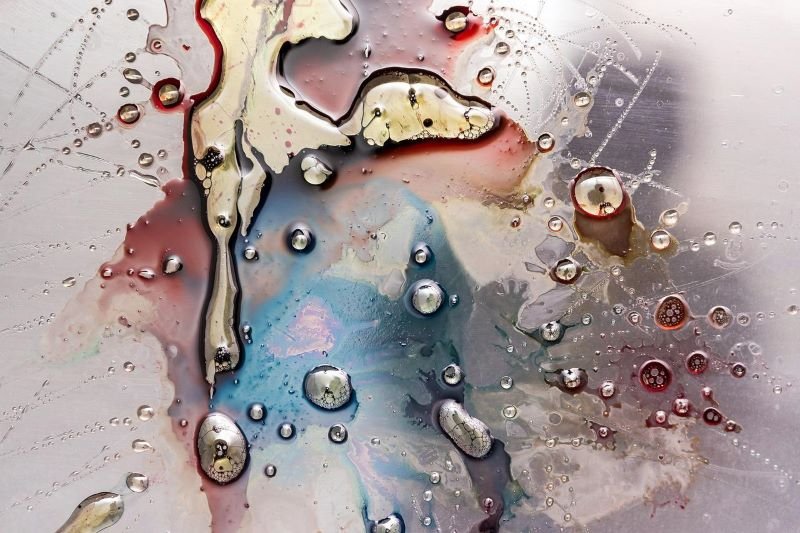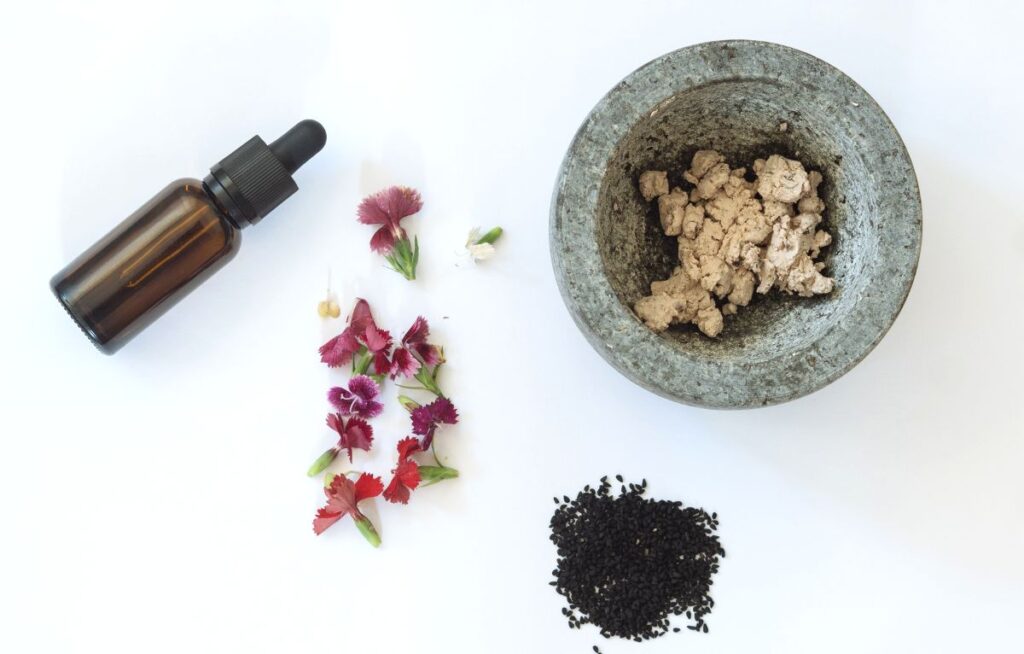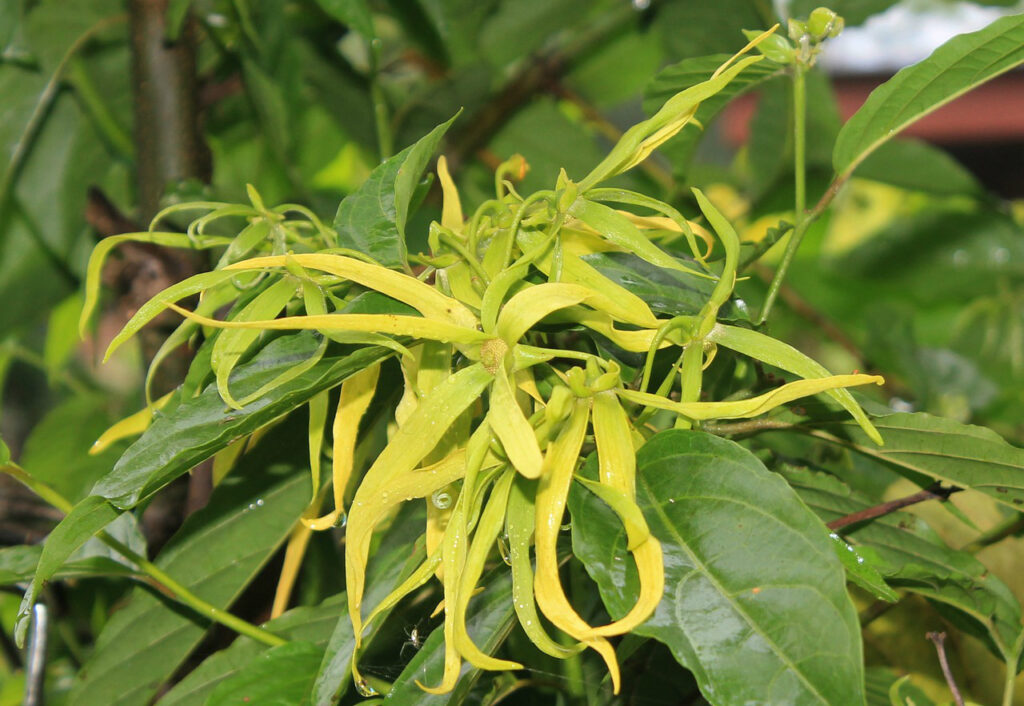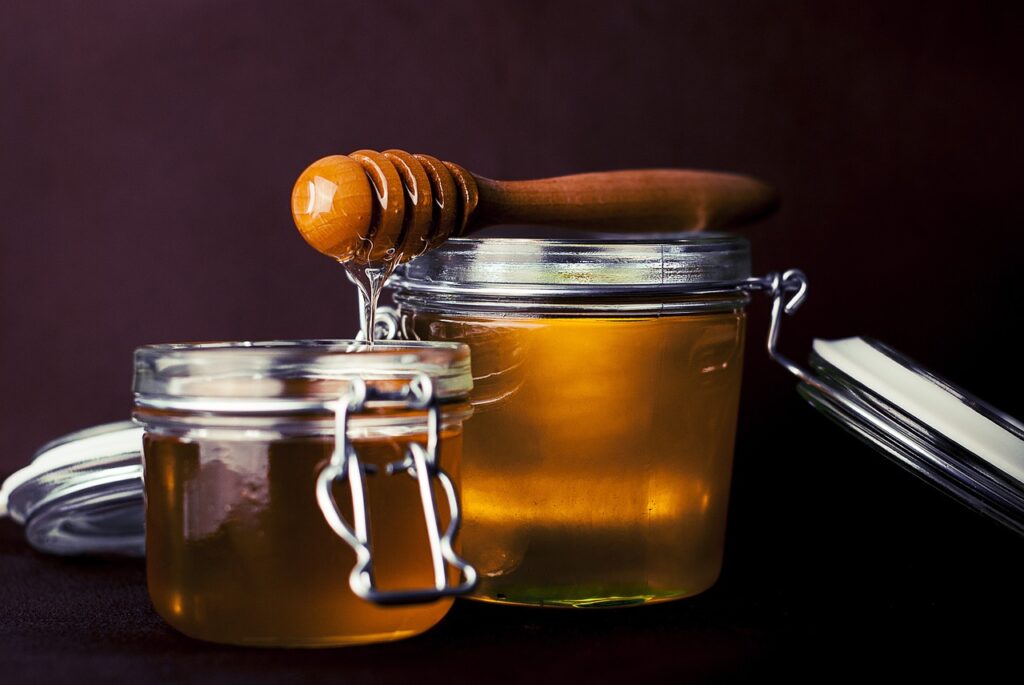DIY Facial Exfoliator Tips: Simple Tricks, Plus 7 Insanely Easy Recipes
There are a million and one ways to exfoliate your skin, but sometimes it’s just too hard or time-consuming to get that perfect, glowy complexion. Don’t worry. Exfoliation doesn’t need to be complicated. In this article, we will share seven easy DIY facial exfoliator recipes that will leave your skin feeling refreshed and looking its best. joj
Keep in mind that these are insanely easy recipes that even beginners can try.
Homemade facial scrub recipes should be apt for your particular skin type (more on that later). If you’ve never tried a DIY facial exfoliator before, you’re missing out on an excellent way to care for your skin at home. Homemade facial scrubs can be quite gentle, incredibly effective, and can help you remove dead skin cells without damaging your skin.
Though, there are many options for exfoliation. Some are gentler than others, some are natural, and some are synthetic. In this article, we’ll be discussing natural DIY exfoliator face scrub recipes for varying skin types.
That’s what’s so great about DIYs: the recipes can be customized to your skin type and then customized based on your experience with each one.
A word of caution: the skin on your face is fragile. If you’ve never exfoliated before, be extra careful to exfoliate gently and patch test a small area of skin first.
Before we jump into the recipes, let’s get discuss a bit of context.
Why Exfoliate with a DIY facial exfoliator at all?
Your skin, which happens to be the largest organ in your body, is the foundation for your natural beauty. So, it’s important to maintain and nourish it on a regular basis. One way to do that is by exfoliating. Exfoliation removes the dead skin cells that can build up and make your complexion look dull or even make you more prone to breakouts. Knowing your skin type is critical for choosing the best method of exfoliation for your needs.
Dead Skin Cell Removal: Why it’s Important
Dead skin cells are constantly being shed from the surface of our skin. In fact, we lose about 30,000-40,000 dead skin cells every minute! While this process is natural and necessary for healthy skin, it’s important to remove dead skin cells regularly in order to reveal the healthy new skin below. Exfoliation (the process of removing dead skin cells) can be done manually or with a chemical exfoliant.
Unclogging Pores: Critical for Skin Health
Pores are tiny openings in the skin that allow oil and sweat to escape. When they become clogged, it can lead to skin problems like blackheads, whiteheads, and acne. The sebaceous hair follicle is responsible for moving the oily substance, sebum, to the surface of the skin. Along the way, it also picks up debris and ejects it from the pore. The pore naturally keeps itself clean, but the buildup of dirt and oil can cause the pore to become clogged and inflamed, and an excellent environment for the growth of bacteria.
Unclogging your pores is, therefore, an important step to improving your skin health.
Also, when there’s an accumulation of dead skin cells on the surface of the skin, it’s harder for natural products to penetrate and nourish the skin. Additionally, the skin’s oil and moisture levels are harder to maintain. Exfoliation helps to unclog pores by bringing a healthy layer of skin to the surface.
Retaining Skin Moisture: Exfoliation benefits
As we age, our skin begins to produce less oil and has a more difficult time maintaining an ideal moisture balance. This can result in a drier complexion, which can be exacerbated by environmental factors such as sun exposure and cold weather. One way to combat this is with exfoliation. Exfoliation allows moisturizers to penetrate into the skin, making them more effective overall.
There are many different ways to exfoliate the skin, including using scrubs, acids (AHAs), or enzymes. For those with dry skin, it is important to use a gentle exfoliator that will not cause irritation. In addition, it is important to moisturize after exfoliating in order to seal in the moisture. Skin type is important when considering the multiple exfoliation options available.
Exfoliation and Skin Types

The American Academy of Dermatology classifies five main skin types, which are briefly described below. When it comes to exfoliating, your skin type is an important consideration. Your skin type will determine how you exfoliate, as well as which methods of exfoliation you should try. Which one of the below options sounds like your skin type?
Sensitive Skin
According to a study published in the Clinical and Experimental Dermatology Journal, of the 1,039 subjects that participated, 68.4 reported their skin was sensitive to some degree. That means that over half of the population may have this skin type, which may be why it seems that so many suffer from skin irritation.
Skin sensitivity can be caused by environmental factors such as sun exposure and pollution, as well as sudden changes in the weather and humidity. Sensitive skin can manifest itself as a rash, dryness, redness, or itching. If you have sensitive skin, it’s important to choose your products carefully (or ingredients for DIYs) and avoid harsh ingredients like alcohol and synthetic fragrances. Thankfully, there are many products available for sensitive skin and many ways to create your own sensitive skin solutions at home, so it’s important to do your research to narrow down the options.
Normal Skin
This skin type is thought to be the most common type of skin. After all, we’d all like to think of ourselves as ‘normal’, right? Characteristics of normal skin include an overall even complexion, few blemishes, and a consistently healthy glow. Individuals with normal skin don’t typically have overly dry or oily skin. Additionally, they won’t regularly have problems with skin sensitivity or redness.
Moreover, that means that people with this skin type don’t usually get irritated skin from activities like showering and bathing, excessive sweating, environmental changes, and so on. Skin that’s less prone to irritation is skin that won’t be as susceptible to external factors or environmental changes, whereas sensitive skin is often quite easily irritated. Due to these reasons, maintaining skin health with this skin type is more manageable overall vs. other skin types.
Dry Skin
Dry skin is a common problem that can occur year-round or only during certain seasons. Dry skin often feels rough and scaly, and it can be itchy and easily irritating. The cause of dry skin is not always clear, but it may be due to a lack of moisture in the air (low humidity), exposure to harsh chemicals or wind, or using soaps or detergents that overdry the skin.
Dry skin typically appears flaky, and even peely at times. If dry skin is severe, it can even bleed and require the care of a dermatologist. Generally speaking, dry skin is quite common, and there are many ways to treat it. Not drinking enough water can also exacerbate and cause consistently dry skin, so keep well hydrated.
Oily Skin
Do you have an oily skin type? If so, you’re not alone. Oily skin is caused by overactive sebaceous glands that produce too much sebum, which is the oil that coats the surface of the skin. While having oily skin may be frustrating and difficult to deal with, there are ways to manage it. This excess sebum and oil can lead to a variety of skin problems, including acne, blackheads, and enlarged pores.
Additionally, you’ll regularly have skin that feels oily and may even produce a shiny sheen. Keep in mind that oily skin doesn’t automatically equal skin with acne. Oily skin isn’t necessarily problematic, no matter how many marketing commercials will try to convince you of that.
“Have oily skin?” they ask, “…then we have this wonderful chemical cocktail that will strip your skin of all of its oil in a quick 30-second facewash!”. Nonsense. While one may be more susceptible to acne if they have oily skin, diet, healthy sleep patterns, stress management, and an overall healthy lifestyle is of major importance for the prevention of acne as well.
Combination Skin
Combination skin is a term used to describe skin that is oily in some areas and dry in others. This type of skin can be difficult to treat because it requires different products for different areas. The oilier areas need products that will remove the oil (if that’s the kind of cleansing you opt for), while the drier areas need products that will add moisture.
While combination skin can be a bit complicated, it doesn’t need to be necessary, depending on which kinds of cleansing and exfoliation you opt for. For example, a general sensitive natural cleanser could work perfectly fine for this skin type, and even if some areas of the skin may tend to be more oily, that doesn’t mean that you’ll automatically develop patches of acne. After all, diet, stress, and sleep are each incredibly important for skin health too.
Types of Exfoliation

Manual Exfoliation (aka Physical or Mechanical Exfoliation)
Each of these three methods of exfoliation is often used synonymously. The key idea behind these methods of exfoliation is that physical objects are being used to dislodge dead or loose skin cells from the skin’s outer layer. So, essentially, friction is at work with these exfoliation methods.
Manual exfoliation can be done through the use of a face scrub, abrasives, muslin cloth, or exfoliating brushes. Also, it’s important to note that manual exfoliation can be done gently when done carefully. In the exfoliation recipes mentioned in this article, we’ll primarily focus on manual exfoliation methods, including natural abrasives.
10 Common Natural Exfoliants and Face Scrub Ingredients:
- Desiccated Coconut
- Baking soda
- Ground flax seeds
- Sugar
- Finely ground sugar
- Cinnamon
- Coffee grounds
- Finely ground almonds
- Oats
- Finely ground sea salt
The list of potential exfoliants is many, though the above natural exfoliants are some of the most common ones readily available. There can be many benefits to manual exfoliation when done correctly, carefully, and gently. It’s wise to try out different exfoliant materials before you settle on the best ones for your skin type. Some are more abrasive than others, some can be ground differently, some may work well on certain parts of the body, but not necessarily the face, and so on. Patch testing is highly recommended when determining which exfoliation material you choose!
Chemical Exfoliation
Chemical exfoliation is the process of using a chemical exfoliator agent to remove the top layer of skin. This can be done in a professional setting, such as a salon, or at home with over-the-counter products. Chemical exfoliation aims to remove dead skin cells and reveal the newer, healthier skin beneath by using specific ingredients that encourage dead skin cells to detach or dissolve.
The ingredients used for chemical exfoliation are typically alpha hydroxy acids (AHAs) or beta hydroxy acids (BHAs). AHAs are water-soluble and include glycolic acid, lactic acid, tartaric, citric, malic acid, and mandelic acid. BHAs are oil-soluble and include salicylic acid. AHAs work by breaking down the “glue” that holds skin cells together, allowing them to slough off, while BHAs are fat-soluble and are often used for people with oily skin that’s more susceptible to acne. The most common example of a BHA is salicylic acid.
There are also many kinds of AHAs, which we’ll dive into a bit deeper below. Perhaps one of the most important considerations in regard to their efficacy is “Whether AHA is a friend or foe of human skin depends on its concentration.”, as was one conclusion in this study. To add, AHAs can also be combined to leverage the benefits from more than a single AHA ingredient.
Common AHA Chemical Exfoliants
Glycolic Acid
Glycolic acid is a water-soluble AHA derived from sugar cane and is one of the most widely used acids in skincare products. As an acid, it is highly absorbable, making it the perfect choice for smoothing fine lines, improving skin texture, and anti-aging applications.
Glycolic acid has also been used for a variety of purposes because of its antimicrobial potential, as shown in a recent study.
Lactic acid
It has been widely used in skin-care products since ancient times. The ingredient can be isolated from sour milk and was believed to have benefited Cleopatra from its skin-care benefits. While lactic acid is known to be gentle on the skin, it can cause mild stinging when applied topically.
Stinging is not necessarily indicative of its effectiveness, and it can be uncomfortable. However, lactic acid as an exfoliant can be used on sensitive skin in the right concentration. Patch testing is recommended before using lactic acid on the entire face.
Tartaric acid
Another alpha-hydroxy acid is tartaric acid, which comes from multiple fruits but is most notably found in grapes. Although tartaric acid is naturally present in many plants, it was only in the 18th century that it was isolated from grapes. Tartaric acid can help exfoliate the skin and remove dead skin cells.
The acid also has antioxidant, humectant, and pH-balancing properties. Many OTC skincare products contain tartaric acid. The acid is beneficial for a variety of reasons, including skin-lightening, anti-melasma, acne, and hyperpigmentation. AHA products that contain tartaric acid can also help to reduce the appearance of fine lines and wrinkles.
Citric acid
Citric acid is another member of the alpha-hydroxy-acid family, which helps improve the skin’s condition by stimulating the production of collagen. It also has antioxidant properties that shield the skin from the damaging effects of free radicals.
Additionally, it helps to balance the pH level of skincare products. Citric acid is also beneficial in promoting the skin’s barrier’s function of protecting the skin from pollutants and toxins. It’s generally considered safe for all skin types. Hence, it is an important ingredient in many skincare products.
Malic acid
Malic acid is a type of alpha hydroxy acid (AHA) that is found in multiple fruits, most notably apples. It is a natural exfoliant that helps to remove dead skin cells and reveal a brighter, more radiant complexion. Since malic acid is also thought to be more gentle than some other AHAs when used in the correct concentration, it can be useful for mild acne.
The reason it’s generally more gentle is that this AHA doesn’t penetrate quite as deeply into the skin and has a slower absorption rate, according to dermatologist Julie Russak, MD.
Mandelic acid
Mandelic is derived from almonds and can be used in conjunction with other skincare products. This chemical exfoliant promotes cell turnover by releasing cells attached to the surface of the skin. Mandelic acid has also been shown to stimulate skin collagen production, the principal protein in skin and connective tissue, improving its tone.
Results from using mandelic acid can vary for each person, but some individuals notice an improvement in their overall complexion after just a few weeks.
Natural Face Scrubs vs. Synthetic Face Scrubs
While many traditional store-bought face scrubs may contain some naturally derived ingredients, they oftentimes also contain parabens, artificial fragrances, phthalates, sulfates, and more. Why settle for synthetic chemicals when there are natural alternatives that don’t contain questionable ingredients?
Additionally, many face scrubs (until 2015) contained plastic microbeads that assisted with exfoliation. However, the FDA banned the usage of microbeads with the Microbead-Free Waters Act of 2015. The reason for the ban was that 8 trillion microbeads were inadvertently finding their way into streams and oceans in the United States daily (Newsweek), mainly due to them being washed down the drain by unsuspecting consumers using products that contained them. If cosmetic companies instead resorted to using natural products that would break down over time, this major source of pollution could have been avoided.
Want to read a bit more about natural vs. synthetic skincare? Check this out: Why Natural Skincare is Better: 5 Reasons to Switch
How to Use Homemade Face Scrubs: 5 Safety Tips

Natural exfoliation can leave your face looking fresh and nourished. However, you need to find the right balance between over-exfoliation and under-exfoliation, as too much of either can lead to irritation and dryness. Listed below are tips to help you decide how often you should exfoliate your face.
Start with a small skin patch test.
Perform patch tests a few times if trying a new exfoliator or facial scrub recipe to see how your skin reacts. If the results are good, you can use your homemade face scrub on the entire face.
Start gradually; don’t exfoliate daily.
If you haven’t exfoliated before, try doing so once a week in the beginning or even once every two weeks. See how your skin reacts to that frequency of exfoliation first, then you can try exfoliating twice per week. Anything beyond twice a week is likely not necessary.
How often you exfoliate will primarily depend on your own individual skin type, sensitivities, and so on. Some individuals do exfoliate daily, but that’s not necessary for most people and would be disastrous for others. Our skin does a fairly good job of maintaining itself, so exfoliation is a way to help its natural process be a bit more efficient. If you’re unsure how often you should exfoliate, speak to your dermatologist or skincare professional for guidance.
Don’t use too much pressure. It’s not needed.
When exfoliating, let the ingredients work for you. Exfoliating isn’t like removing wax from a car; there’s no need to use excessive pressure. If using physical or manual exfoliating, gently rub the exfoliants across the skin rather than pushing them into the skin. Too much pressure could cause your skin to become irritated and inflamed. You can’t be too gentle when exfoliating, especially if you’re using a highly abrasive sugar face scrub or something similar.
Don’t allow chemical exfoliants to sit on the face too long.
The length of time you allow a chemical exfoliator on your face will depend on the chemicals being used and the concentration of those chemicals. As a reminder, many chemicals we discussed are naturally found in fruits. Generally speaking, if you’re using homemade facial scrubs or homemade exfoliator recipes, the concentration of AHAs won’t be high enough to do any serious damage.
If using store-bought chemical peels or exfoliators, follow the instructions to the letter. We prefer to use natural homemade face scrubs with ingredients from around the house rather than spending money on store-bought face scrubs.
Don’t exfoliate damaged Skin.
Damaged skin would include skin with acne, reddened or irritated skin, sunburned skin, and so on. Additionally, if you or anyone in your family suffers from eczema, as in our family, be very cautious with exfoliating since the skin is prone to respond with inflammation. Exfoliating damaged skin is counterintuitive, and you really will do more harm than good. If in doubt, speak to your dermatologist before proceeding.
7 Homemade Face Scrub Recipes
With so many exfoliating ingredients being readily available, even in the kitchen, the list of potential homemade facial scrub recipes is endless.
1.) Homemade facial scrub for glowing skin

This sugar scrub can be used gently on the face as well as on the body if you have any leftovers. Not only does it smell wonderful, but brown sugar is an excellent exfoliant. Since sugar is abrasive, it’s important not to press it into the skin when massaging the face. If preferred, you can replace the olive oil with grapeseed or coconut oil as well. Feel free to add a drop or two of frankincense essential oil to this sugar scrub recipe as well.
This facial scrub is especially wonderful to use in the winter, particularly with its warm scents of clove, cinnamon, and frankincense.
Ingredients:
-1 cup brown sugar
-1/3 cup olive oil
-1 teaspoon ground cinnamon
-1/4 teaspoon ground cloves
-1/4 teaspoon ground nutmeg
Instructions:
1. In a bowl or mason jar, whisk together the sugar, oil, cinnamon, cloves, and nutmeg.
2. Pour the mixture into a small container and store for 4-6 weeks.
3. To use, mix one tablespoon of scrub into a small bowl of water, as needed, and massage the skin for about 30 seconds. Rinse off with warm water and apply toner and moisturizer as needed.
2.) Homemade facial scrub for aging skin

This facial scrub is packed with skin-healing ingredients like rosehip and jojoba oil, manuka honey, and even Ylang Ylang oil. Many ingredients may help with signs of aging on the face, as well as many combinations that can be used. Though, if you’re starting out, this is a great recipe to try. Plus, it has an amazing floral scent, making that a wonderful springtime facial scrub.
This is a great facial scrub recipe for use all year round, but the smell of Ylang Ylang essential oil in the springtime is especially welcome.
Ingredients:
-1 cup of brown sugar
-1/3 cup of organic jojoba oil (or fractionated coconut oil)
-1 tablespoon of rosehip oil
-2-3 teaspoons finely ground ginger
-2 or 3 drops of Ylang Ylang essential oil
-1 tablespoon manuka honey
*Optional: Feel free to add basil to this mix as well for additional skin benefits.
Instructions:
1. In a large bowl or mason jar, mix together all ingredients
2. Store this exfoliating scrub in a mason jar or other sealable container. Use within 4-6 weeks.
3. To use, mix with water as desired, then gently rub across the face in slow circular motions for about 2-3 minutes. Rinse, then apply a natural moisturizer.
Optional: After massaging into the face, leave the scrub on the skin for an additional 5-10 minutes before rinsing.
3.) Homemade facial scrub for sensitive skin

When it comes to facial scrubs, those with sensitive skin should tread lightly at first. If you have sensitive skin, it’s especially important to use a scrub that’s less abrasive, less likely to cause irritation, and more likely to hydrate and nourish the skin. The below easy DIY exfoliating recipe’s main ingredient is oatmeal, paired with sensitive skin-nourishing jojoba oil (or grapeseed). Also, rice flour is known to contain allantoin, which is known to soothe and heal the skin.
This exfoliating mix also has a wonderful floral scent, with the wonderful tones of geranium and rose oil, both of which have anti-inflammatory skin benefits. Additionally, the skin-nourishing benefits of manuka honey are at play in this recipe as well. Manuka honey assists the skin with moisturization since it’s hygroscopic, anti-inflammatory, and anti-microbial. More on the benefits of Manuka honey for skin: Manuka Honey: Tremendous Skin Benefits
Ingredients
-1 cup finely ground oatmeal
-1 tablespoon finely ground rice flour (start with less if you have very sensitive skin)
-1/4 cup jojoba oil (or grapeseed oil)
-1 tablespoon manuka honey
-2 drops geranium essential oil
-2 drops rose essential oil
Instructions
1. In a large bowl or mason jar, mix all ingredients until well combined.
2. Store for 1-2 weeks in a Mason jar. This scrub also makes for a wonderful addition to bathwater for a nourishing oatmeal bath, which is especially great for sensitive skin
3. To use, mix with water as desired, then gently rub across the face in slow circular motions for about 2-3 minutes. If you have time, allow the scrub to remain on the skin for a few minutes, rinse with warm water, then follow up with a natural and soothing moisturizer.
4.) Homemade facial scrub for dry skin

Exfoliating dry skin is indeed important when it comes to enabling the skin to maintain its own proper moisture levels. When the skin has an overabundance of dead skin cells, that makes it all the more difficult for moisturizers to penetrate deeply, which is especially important for those who suffer from dry skin.
The below recipe is especially suited for those with dry skin. Finely ground almonds are the main ingredient here, along with moisturizing sweet almond oil and avocado oil. Avocado oil is mildly comedogenic, though, for those with dry skin, it should definitely help with skin moisturization. Avocado oil can even be used on those with oily skin without issue. Also, manuka honey and frankincense are incorporated in this recipe for their known skin benefits.
Ingredients
-1 Cup finely ground almonds
-1 tablespoon finely ground oats
-1/4 cup sweet almond oil (jojoba is fine as well)
-1 tablespoon avocado oil
-1 tablespoon manuka honey
-2-3 drops frankincense essential oil
Instructions
1. In a large bowl or mason jar, mix all ingredients until well combined.
2. Store for up to 3-4 weeks in a mason jar.
3. To use, gently rub the mixture onto a wet face for 2-3 minutes, allow to sit for 2-3 minutes, then rinse. Apply a nourishing toner and moisturizer following exfoliation.
5.) Homemade facial scrub for oily skin

Sometimes, the skin produces an overabundance of oil for a variety of reasons. However, oily skin combined with excessive dead skin cells can increase one’s chance of oily skin turning into acne-prone skin. Exfoliation reduces acne breakouts by removing dead skin cells and debris that can clog pores, cause inflammation, and lead to bacterial growth on the skin’s surface. Many people with oily skin also typically have an oily t-zone, so that’s just another reason to ensure that area is exfoliated.
The below recipe contains oatmeal, rice flour, and non-comedogenic grapeseed oil. In addition to those ingredients, tea tree and patchouli essential oils are combined, both for an incredible overall scent as well as for an additional anti-bacterial complement.
Ingredients
-3/4 cup finely ground oatmeal
-1 tablespoon rice flour
-1 tablespoon brown sugar
-1/3 cup grapeseed oil
-2-3 drops tea tree essential oil
-2-3 drops patchouli essential oil
Instructions
1. Mix all ingredients in a mason jar or other glass container. Store in a cool, dark place.
2. Store for up to 4-6 weeks.
3. To use, gently rub the mixture onto a wet face for 2-3 minutes, allow it to sit for 5-10 minutes, then rinse with warm water. Apply a nourishing toner and moisturizer following exfoliation.
6.) Homemade facial scrub for acne-prone skin

This face scrub has ingredients that are especially suited for fighting acne, as well as for reducing inflammation. Specifically, oatmeal is wonderful for reducing inflammation, as is aloe vera gel. Aloe vera for acne has also been studied, and the results were quite positive.
Besides that, this recipe also includes ginger, which is anti-bacterial and anti-inflammatory. Importantly, rosehip and grapeseed oil are used in this recipe, both of which are comedogenic oils and are known to soothe the skin.
Tea tree essential oil can be added to this recipe as well for its known benefits. While there are so many natural ingredients helpful for acne-prone skin, we can’t include them all in every single recipe. The recipe below is a great start, though.
For something even simpler, you could try ground oatmeal as the main ingredient, a combination of rosehip and grapeseed for the carrier oil, and manuka honey with a few drops of an essential oil suited for oily and sensitive skin.
Ingredients
-3/4 cup finely ground oatmeal
-1 tablespoon finely ground rice
-3-4 tablespoons aloe vera gel
-3 tablespoons rosehip oil
-1 tablespoons grapeseed oil (or jojoba oil)
-1 tablespoon manuka honey
-1 teaspoon finely ground ginger (fresh is best)
-2-3 drops roman chamomile essential oil
*Optional: 2-3 drops of tea tree essential oil (causes irritation for some people, so patch test first)
Instructions
1. In a large bowl or mason jar, mix all ingredients until well combined.
2. Store for up to 1-2 weeks in a mason jar.
3. To use, gently rub the mixture onto a wet face for 2-3 minutes, allow to sit for 5-10 minutes, then rinse. Apply a toner or moisturizer suited for oil and acne-prone skin.
7.) Homemade face scrub for combination skin

Individuals with a combination skin typically have dry and oily skin areas. Due to this, choosing face products can sometimes be difficult since many of them are oftentimes made for either dry or oily skin, but not both skin types. The below recipe is well-suited for both skin types and combines the wonderful scents of lavender and myrrh for an extremely relaxing experience.
In regards to exfoliation, it’s important to exfoliate dry skin and oily skin, for the face scrub should be well-suited to each. That means the carrier oils should be non-comedogenic and moisturizing. At the same time, ingredients to control bacteria on the skin’s surface would be helpful, too. With that in mind, the recipe below again contains oats (they’re so great), jojoba oil, and manuka honey as some of the key ingredients.
Ingredients
-1 cup ground oatmeal
-1 tablespoon finely ground cocoa
-1 tablespoon brown sugar
-1/4 cup jojoba oil
-1 tablespoon manuka honey
-2-3 drops lavender essential oil
-1-2 drops of myrrh essential oil
Instructions
1. In a large bowl or mason jar, mix all ingredients until well combined.
2. Store for up to 1-2 weeks in a mason jar.
3. To use, gently massage the mixture across the skin in circular motions for 2-3 minutes. Allow to remain on the skin for 5-10 minutes if possible, then rinse with warm water. Apply a light moisturizer.
FAQs and Exfoliation Safety Tips Wrap-up
There are many common questions in regard to exfoliation, so let’s address some general questions before we wrap up. Also, since your skin’s important, let’s recap some safety guidelines.
How do I use natural exfoliation recipes?
–Patch test: As with any exfoliation product or homemade skin recipe, it’s important always to patch test on your skin a few times before using it long-term.
–Customize to your skin type: Regarding each recipe you use for exfoliation, it’s important to know that you have some freedom regarding the amount of some of the ingredients. For example, perhaps you want additional graininess or abrasiveness to exfoliate a bit more efficiently; in that case, add a bit more sugar, rice flour, etc.
–Not too abrasive: When you exfoliate, it’s important to know that the exfoliation recipe you’re using doesn’t need to feel extra abrasive to work. It’s better to start with a more gentle mix to prevent skin damage.
–Don’t use excessive pressure: As mentioned earlier in the article, it’s not necessary to push the ingredients into your skin when massaging. Instead, rub the exfoliating scrub across your skin, avoiding the eyes.
What is the difference between natural exfoliation and chemical exfoliation?
-Refer to the “Types of Exfoliation” section for additional details, but in a nutshell, natural exfoliation uses physical materials and friction to slough away dead skin cells.
-Chemical exfoliation uses ingredients that work via a chemical process to dissolve and detach dead skin cells, rather than relying on abrasives. Many natural chemical exfoliants can be found in a variety of fruits.
How often should I exfoliate?
-It’s best to start gradually, so try exfoliating once per week in the beginning before increasing your exfoliation frequency.
-For those with sensitive skin, the frequency of exfoliation is just as important as the kind of exfoliation recipe you choose. For example, it would be wise to start with a recipe that uses less exfoliative material at first.
-While some people exfoliate daily, in our opinion, there’s no need to exfoliate more than two times per week. Our skin does a pretty good job of maintaining itself. Our exfoliation regime should work to complement that.
What are the benefits of natural DIY exfoliation vs synthetic products?
- You know exactly what ingredients you’re putting on your skin.
- You have complete control over modifying and adjusting your face scrub recipes to your skin type.
- Scent is important. You can customize your exfoliation scrubs for the exact scents you prefer rather than purchasing something premade that may not smell so great.
- Creating your own exfoliating scrubs is less expensive, better for the environment, and educational. The educational aspect is a really interesting one. There’s something especially fulfilling about creating something on your own and then enjoying its effectiveness firsthand.
- Maybe you’ll create the next best exfoliating scrub that you can then share (or sell) with your friends.
Wrap-up: Exfoliation for Healthy Skin

Skin is natural, and there’s no reason to purchase synthetic, unnatural ingredients to keep it healthy. Not only are countless natural ingredients highly beneficial for skin health, but they’re often inexpensive, too. With today’s inflation and overall economic uncertainty, most people can appreciate additional ways to reduce costs.
If something can be natural, cheaper, and effective for healthy skin, that’s a wonderful combination.
As noted briefly a bit ago, DIYs are also wonderful for the educational journey one can enjoy by making their own skincare products. While there are some amazing store-bought and natural skincare products available, there’s nothing quite like making your own and then seeing that it works just as well as the ones you used to purchase previously.
Get excited, do your research, and try out some of the enticingly easy natural DIY face scrubs above for healthier skin today.


